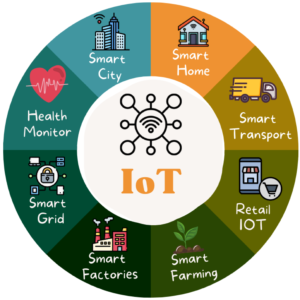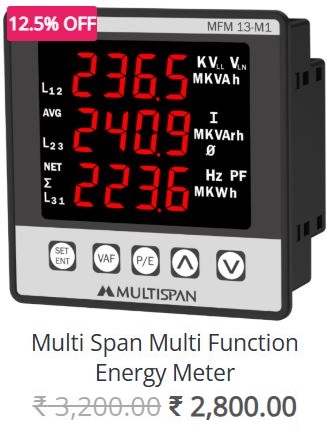In recent years, the field of instrumentation has witnessed a transformative shift towards smarter, more efficient technology. Central to this revolution is the rise of smart sensors, which are increasingly being integrated into a wide array of applications across industries such as manufacturing, healthcare, energy, and environmental monitoring. These cutting-edge devices are not only reshaping how we collect and analyze data but are also enhancing automation, improving efficiency, and offering unprecedented levels of precision.
In this blog, we will explore the emerging trends in instrumentation, focusing on the growing adoption of smart sensors and how they are revolutionizing industries globally.
What are Smart Sensors?
Smart sensors are advanced devices that combine traditional sensing technology with integrated computing capabilities, data processing, and connectivity. Unlike conventional sensors that simply capture data, smart sensors can process and analyze data on-site, provide real-time feedback, and communicate with other systems via the Internet of Things (IoT). This combination of sensory, computational, and communication abilities enables them to monitor, measure, and control various parameters in a more intelligent and efficient manner.
Key Emerging Trends in Instrumentation
1. Integration with the Internet of Things (IoT)
One of the most prominent trends in instrumentation is the integration of smart sensors with IoT technology. The ability to collect and share real-time data remotely has transformed the way industries monitor processes and make decisions. For example, in manufacturing, smart sensors embedded in machinery can monitor operational conditions like temperature, pressure, and vibration. These sensors send alerts to operators, enabling predictive maintenance and reducing costly downtime.
The IoT connection also enhances data analysis, allowing businesses to create valuable insights that improve operational efficiency, enhance safety, and reduce costs.
2. Wireless Connectivity
As industries move towards more agile, scalable, and flexible solutions, the need for wireless communication in instrumentation has grown. Smart sensors that communicate wirelessly can be easily deployed in difficult-to-reach locations without the need for complex wiring infrastructure. This trend is particularly valuable in industries such as oil and gas, where sensors are often placed in hazardous environments or remote locations.
Wireless technology, including Bluetooth, Wi-Fi, Zigbee, and LoRaWAN, allows for real-time data transmission and remote monitoring, reducing the need for on-site personnel and enhancing overall operational efficiency.
3. Miniaturization and Increased Sensitivity
Another emerging trend in smart sensors is the miniaturization of devices. Smaller sensors with greater sensitivity can be integrated into compact systems, allowing for more flexible and precise measurements. This trend has led to innovations in fields such as healthcare, where smart sensors can be embedded in wearable devices to monitor vital signs like heart rate, blood pressure, and glucose levels.
Miniaturized smart sensors also enable the development of innovative technologies such as environmental monitoring devices that can detect air quality, humidity, and pollutants in real-time, contributing to more sustainable practices across various industries.
4. Artificial Intelligence and Machine Learning Integration
The integration of artificial intelligence (AI) and machine learning (ML) with smart sensors is another growing trend in instrumentation. AI and ML algorithms enable smart sensors to not only collect data but also interpret and analyze it in a meaningful way. This allows for predictive analytics, which can be used for tasks like predictive maintenance, anomaly detection, and process optimization.
For example, in the automotive industry, AI-driven smart sensors can predict when a component is likely to fail based on historical performance data, preventing costly breakdowns and improving vehicle safety. Similarly, in industrial automation, AI-powered sensors can optimize processes by adjusting parameters in real-time based on evolving conditions.
5. Energy Efficiency and Sustainability
As the global focus shifts towards sustainability, the role of smart sensors in promoting energy efficiency is becoming increasingly important. These sensors can help monitor energy consumption across industries and provide valuable insights into optimizing energy use.
In smart buildings, for instance, sensors can monitor temperature, humidity, and occupancy to adjust HVAC (heating, ventilation, and air conditioning) systems dynamically, thereby reducing energy waste. Additionally, smart sensors in renewable energy systems such as solar panels or wind turbines can enhance performance monitoring and facilitate real-time decision-making to improve energy production and minimize environmental impact.
6. Edge Computing Capabilities
Smart sensors are now being equipped with edge computing capabilities, which allow data processing to occur closer to the source of data collection. By processing data at the edge, these sensors can provide faster responses and reduce the latency associated with sending data to cloud servers for analysis.
Edge computing enables real-time decision-making in critical applications, such as autonomous vehicles, where immediate data processing is necessary for safety and efficiency. This trend is helping industries to reduce dependence on centralized cloud infrastructure and ensuring more reliable and timely data analysis.

Industries Benefiting from Smart Sensors
Smart sensors are having a significant impact across several sectors, leading to improved operational efficiencies, safety, and sustainability. Some of the industries benefiting the most include:
- Manufacturing: Smart sensors enable real-time monitoring and predictive maintenance of machinery, improving uptime and reducing maintenance costs.
- Healthcare: Wearable devices and smart sensors are transforming patient care by enabling continuous monitoring of vital signs and chronic conditions.
- Energy: Smart sensors in power grids, renewable energy systems, and smart buildings contribute to better energy management, conservation, and sustainability.
- Environmental Monitoring: Smart sensors allow for continuous monitoring of environmental parameters such as air quality, temperature, and pollutant levels, helping to reduce environmental impact.
Conclusion
The shift towards smart sensors in instrumentation is revolutionizing industries by enhancing the accuracy, efficiency, and scalability of data collection and analysis. With advancements in IoT integration, wireless connectivity, AI and machine learning, and energy efficiency, smart sensors are transforming the way businesses operate and innovate.
As technology continues to evolve, the potential for smart sensors is boundless, making them an essential tool in the future of automation, sustainability, and industrial progress. Whether it’s in manufacturing, healthcare, or energy management, smart sensors are at the forefront of a new era of intelligent, data-driven decision-making.
Stay ahead of the curve by embracing these emerging trends in instrumentation and leveraging the power of smart sensors to improve operational performance, reduce costs, and drive innovation.














